Abstract
1. The time course of oedema formation in rats caused by injection of carrageenin into the paw was followed for 5·5 hours. Intact or adrenalectomized rats which had previously been injected with ellagic acid or saliva to reduce considerably the concentration of blood kininogens, or with methysergide to antagonize 5-hydroxytryptamine (5-HT) showed a reduced inflammatory response. It was concluded that kinins and 5-HT contributed significantly to oedema formation during this period.
2. Mepyramine alone had no effect on oedema formation, but in combination with ellagic acid treatment, with or without methysergide, it caused a reduction suggesting that histamine played a minor role in oedema formation during the first 3 hours.
3. Vascular permeability studies indicated that injection of ellagic acid did not interfere with the normal responses in skin to intradermal injections of histamine, 5-HT, bradykinin or compound 48/80. Mepyramine and methysergide, at the doses used in the carrageenin experiments, completely antagonized histamine and 5-HT, respectively, and did not affect the skin responses of bradykinin.
4. Treatment in vivo with ellagic acid or rat saliva was equally effective in reducing plasma kininogen concentrations by an amount equivalent to more than 10 times the quantity of substrate 1 measured by Gautvik & Rugstad (1967).
5. Rat saliva, but not ellagic acid, lowered complement levels by approximately 20%.
Full text
PDF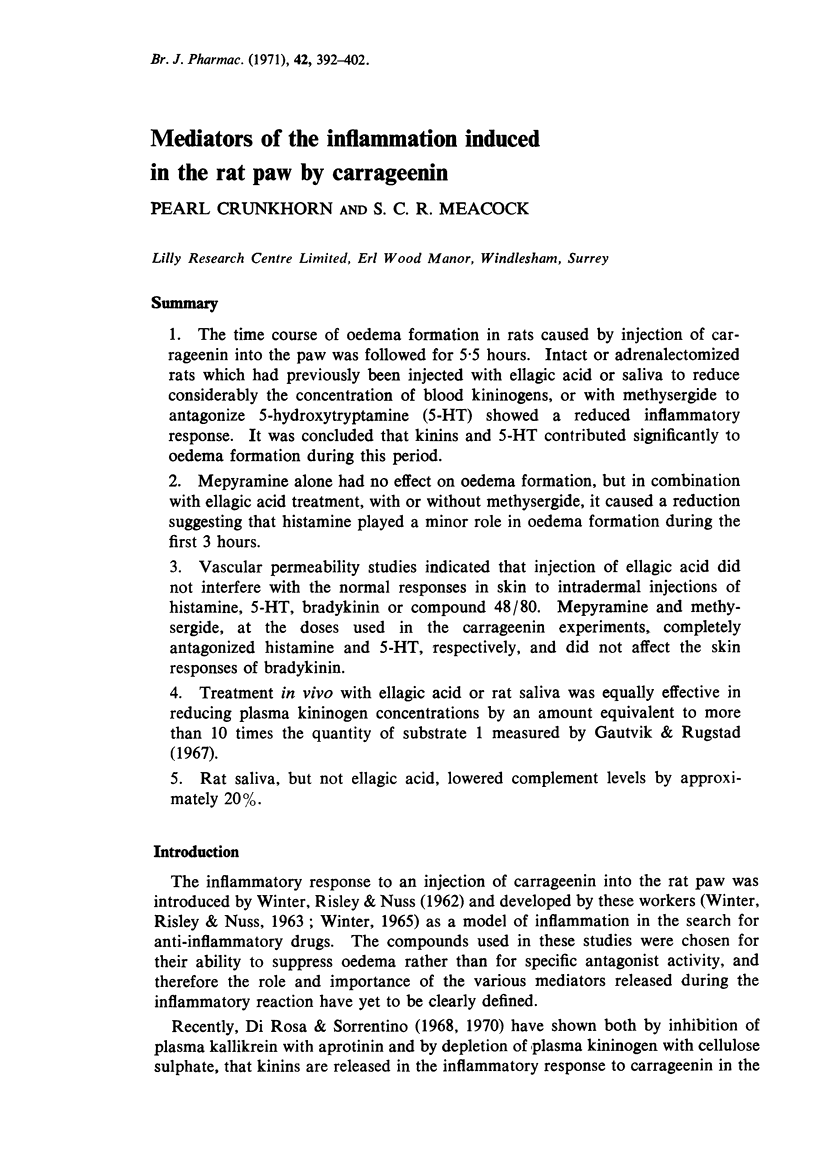
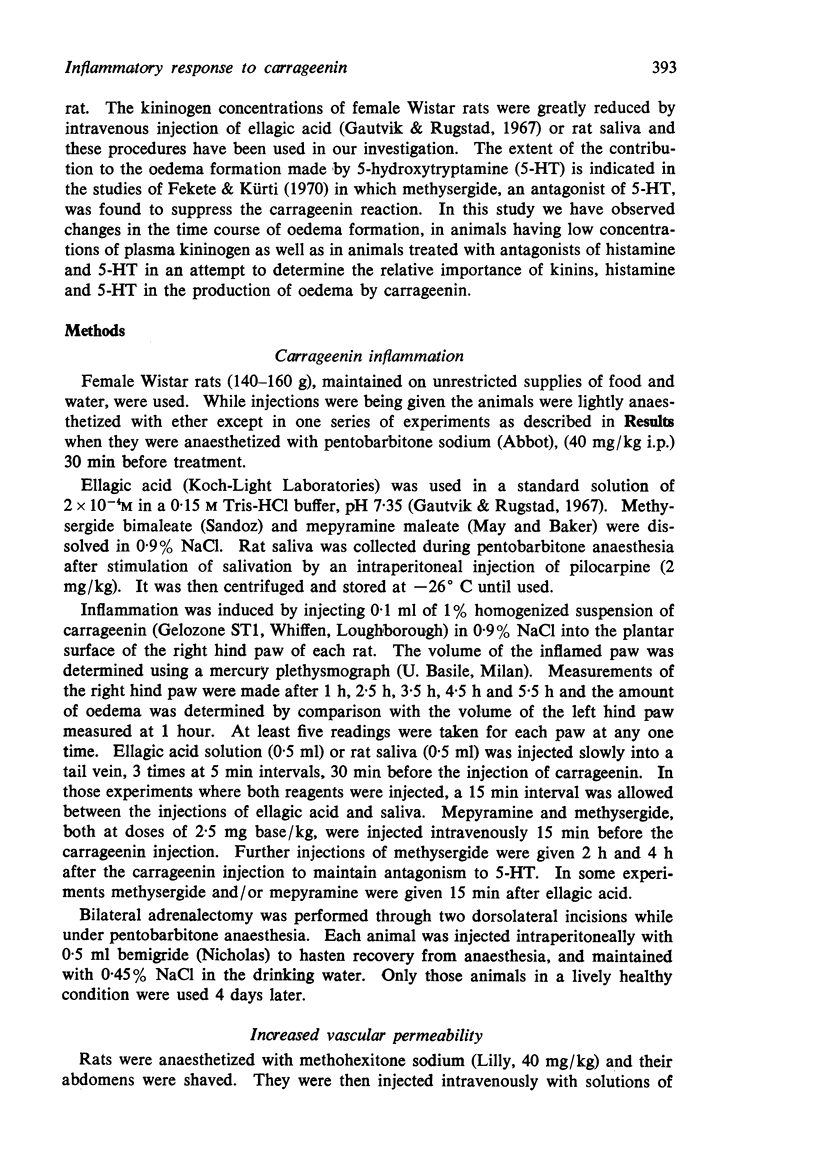
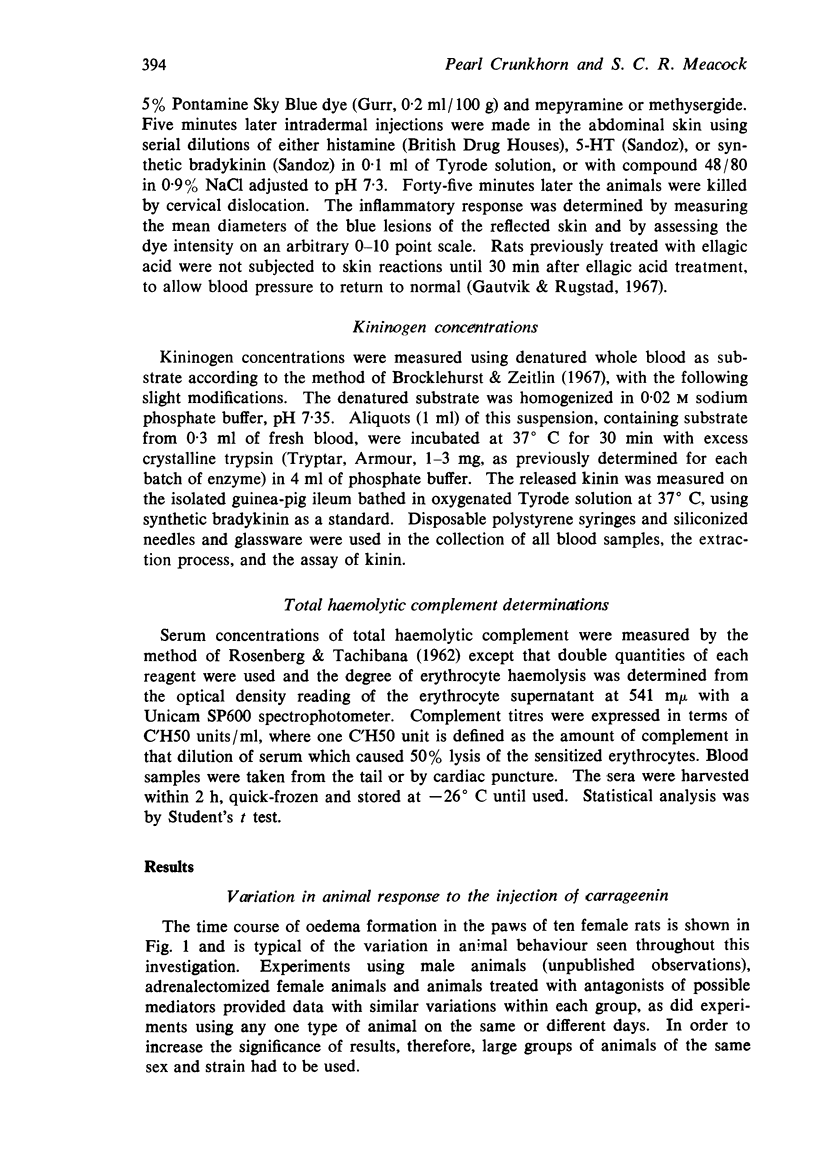
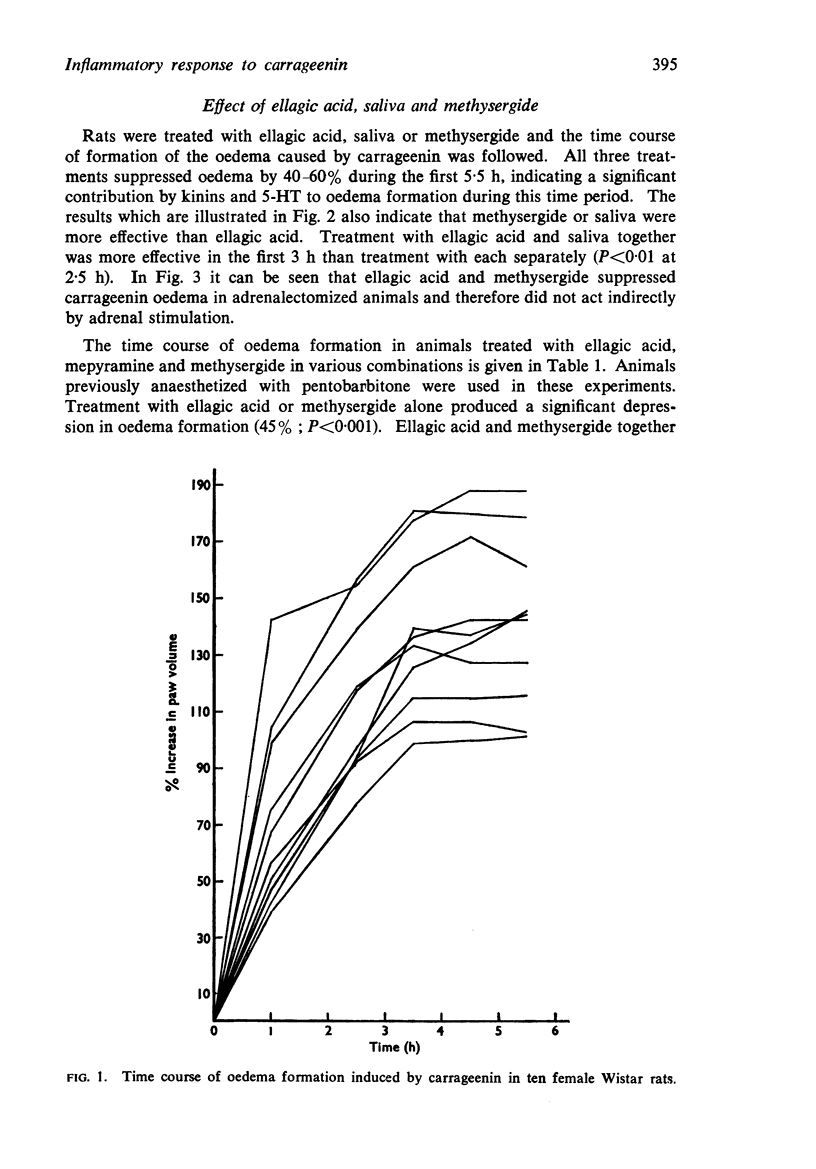
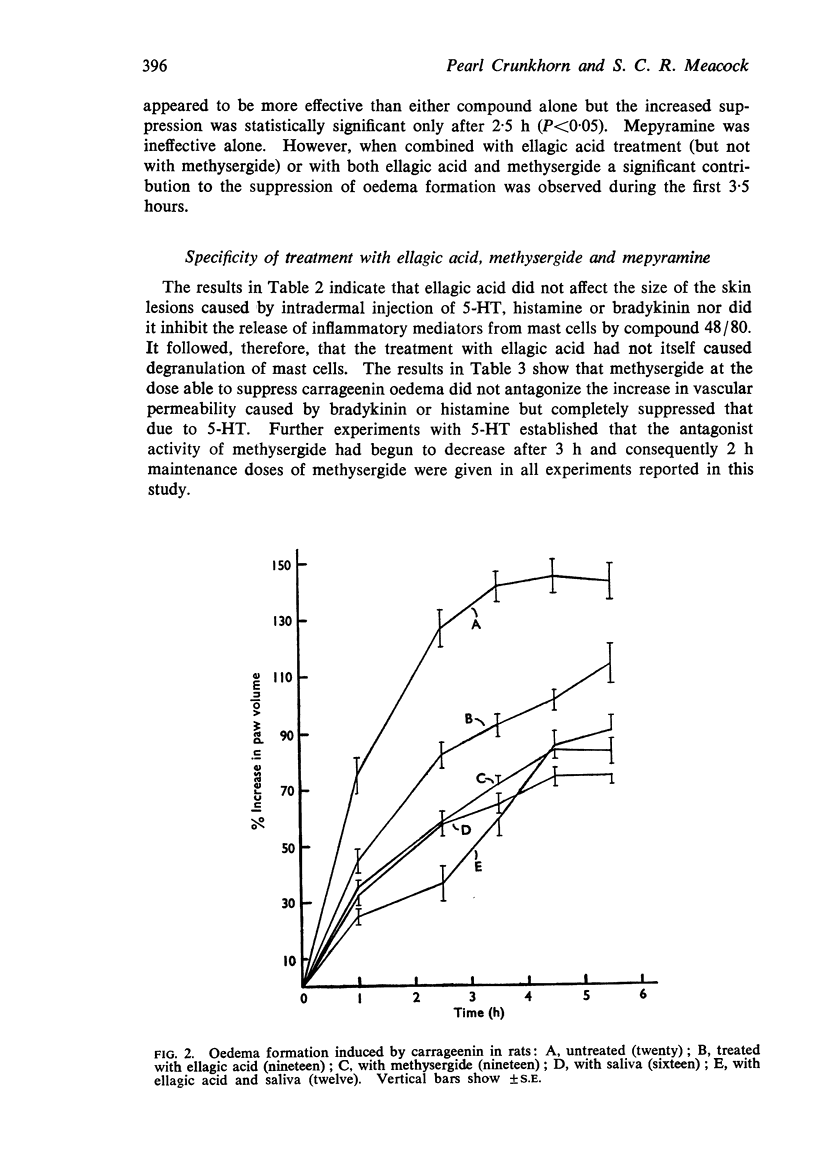
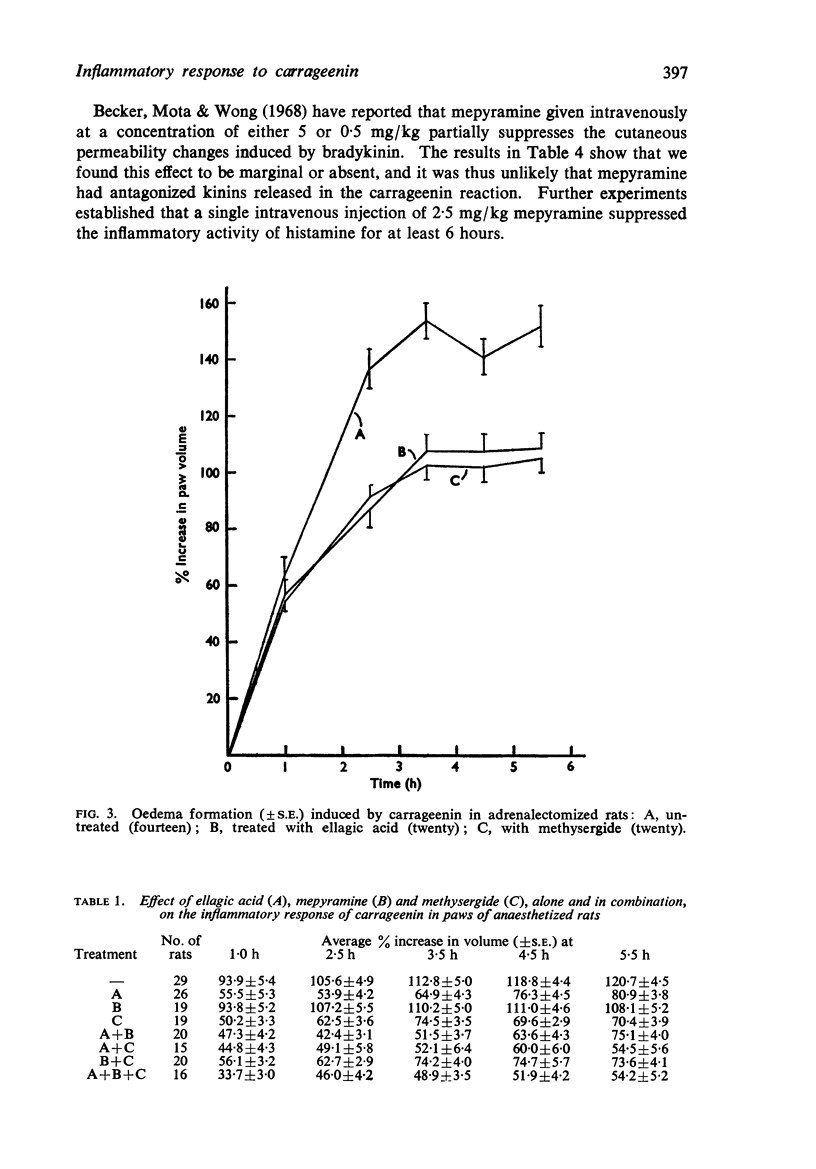
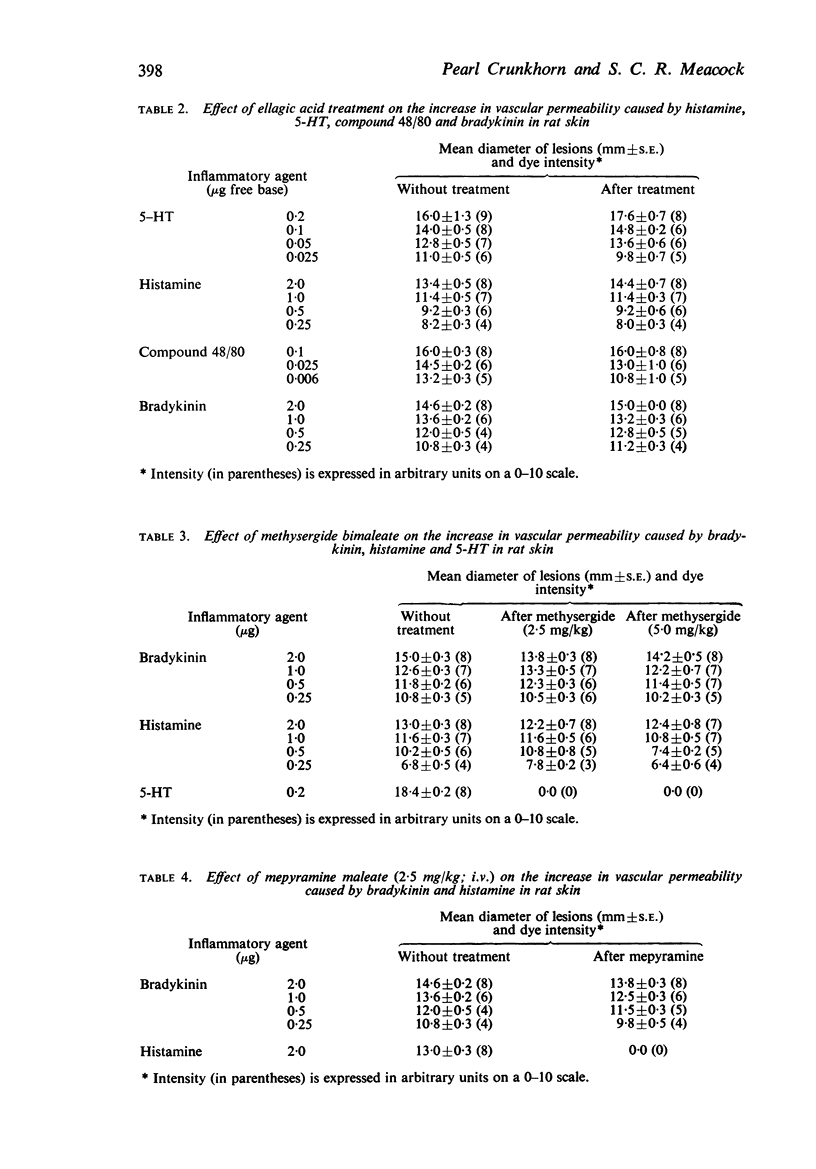
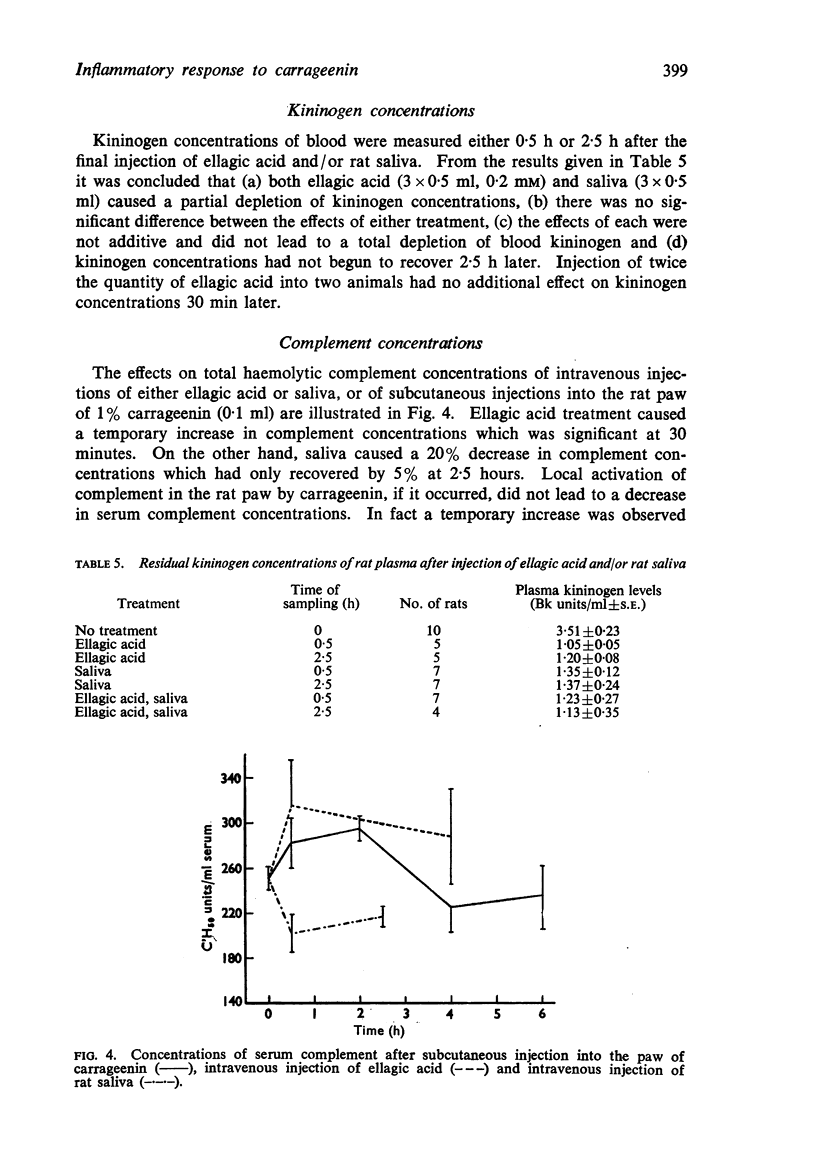
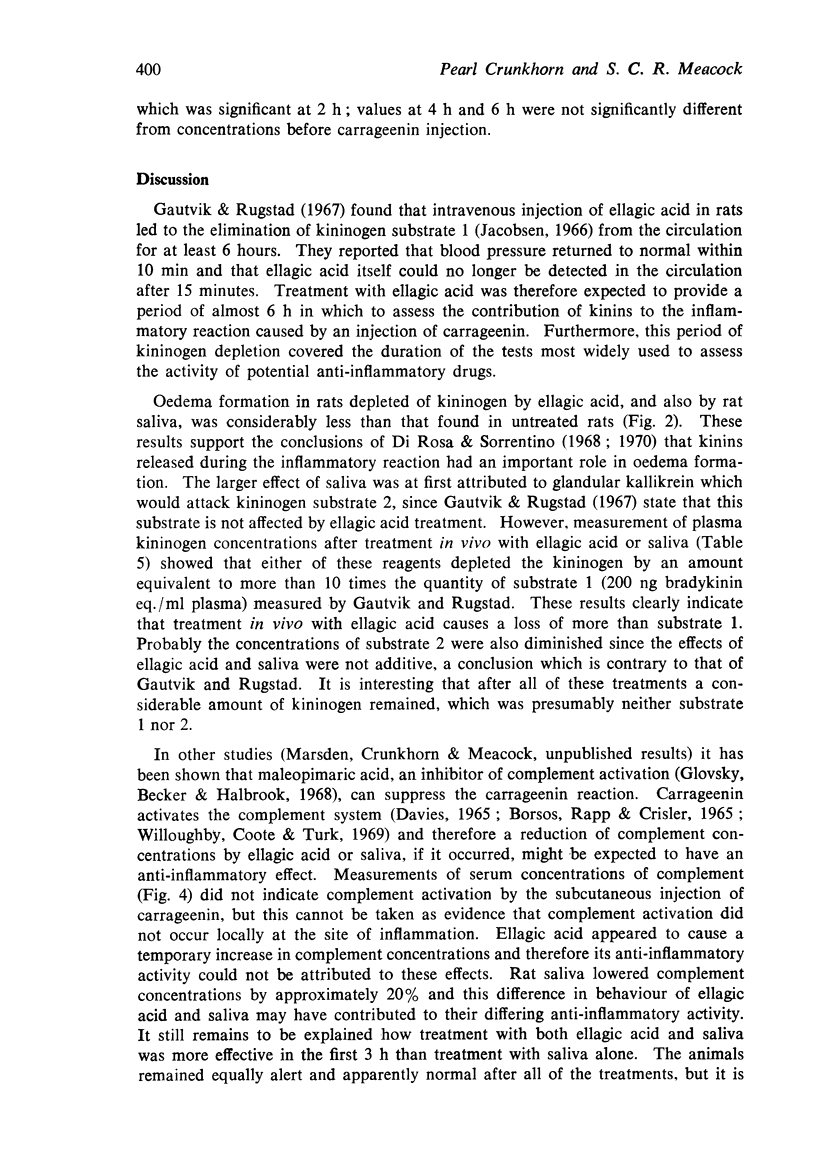
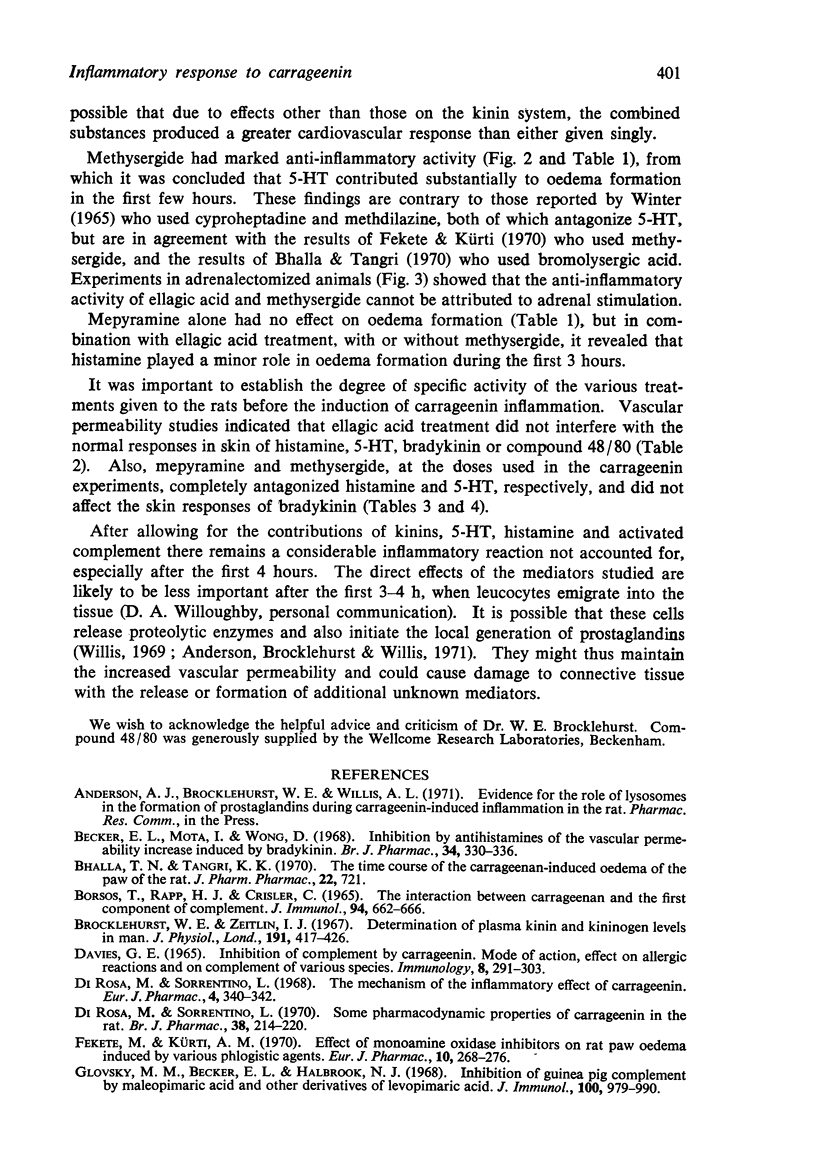
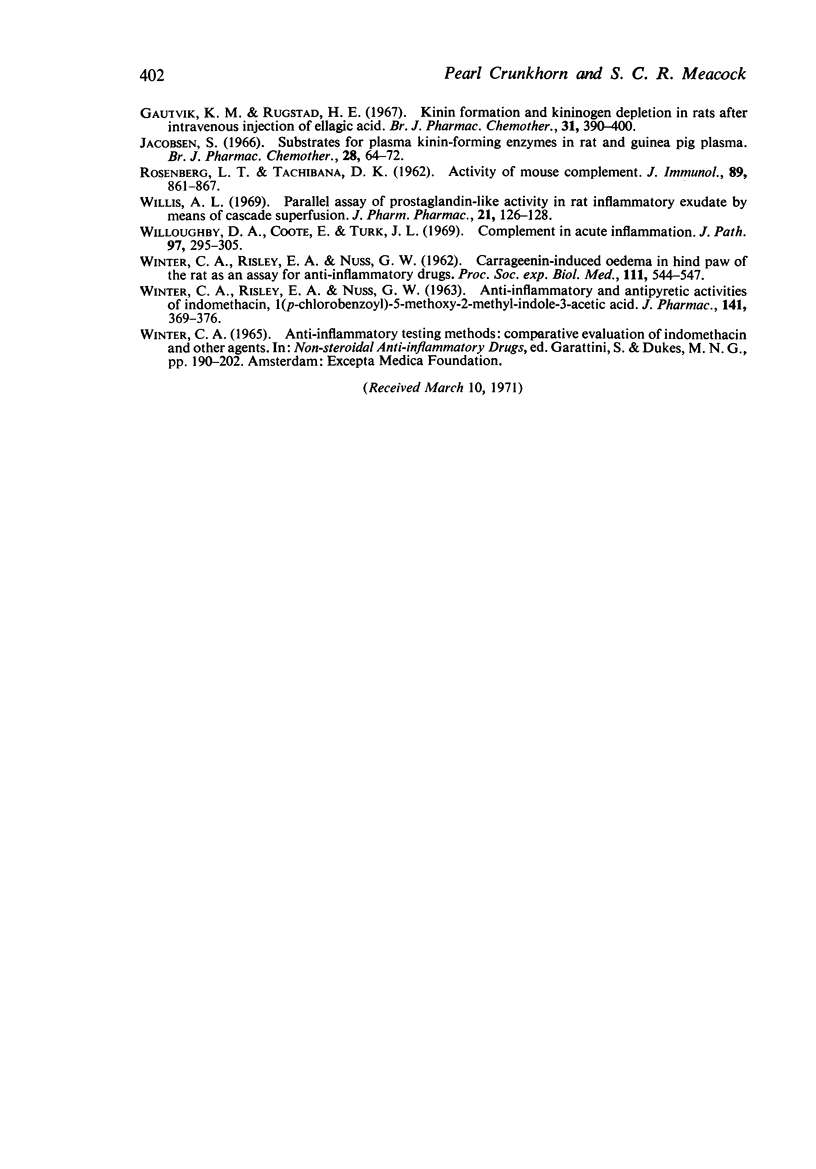
Selected References
These references are in PubMed. This may not be the complete list of references from this article.
- BORSOS T., RAPP H. J., CRISLER C. THE INTERACTION BETWEEN CARRAGEENAN AND THE FIRST COMPONENT OF COMPLEMENT. J Immunol. 1965 May;94:662–666. [PubMed] [Google Scholar]
- Becker E. L., Mota I., Wong D. Inhibition by antihistamines of the vascular permeability increase induced by bradykinin. Br J Pharmacol. 1968 Oct;34(2):330–336. doi: 10.1111/j.1476-5381.1968.tb07054.x. [DOI] [PMC free article] [PubMed] [Google Scholar]
- Bhalla T. N., Tangri K. K. The time course of the carrageenan-induced oedema of the paw of the rat. J Pharm Pharmacol. 1970 Sep;22(9):721–721. doi: 10.1111/j.2042-7158.1970.tb12766.x. [DOI] [PubMed] [Google Scholar]
- Brocklehurst W. E., Zeitlin I. J. Determination of plasmakinin & kininogen levels in man. J Physiol. 1967 Jul;191(2):417–426. doi: 10.1113/jphysiol.1967.sp008259. [DOI] [PMC free article] [PubMed] [Google Scholar]
- DAVIES G. E. INHIBITION OF COMPLEMENT BY CARRAGEENIN: MODE OF ACTION, EFFECT ON ALLERGIC REACTIONS AND ON COMPLEMENT OF VARIOUS SPECIES. Immunology. 1965 Mar;8:291–299. [PMC free article] [PubMed] [Google Scholar]
- Di Rosa M., Sorrentino L. Some pharmacodynamic properties of carrageenin in the rat. Br J Pharmacol. 1970 Jan;38(1):214–220. doi: 10.1111/j.1476-5381.1970.tb10350.x. [DOI] [PMC free article] [PubMed] [Google Scholar]
- Di Rosa M., Sorrentino L. The mechanism of the inflammatory effect of carrageenin. Eur J Pharmacol. 1968 Oct;4(3):340–342. doi: 10.1016/0014-2999(68)90103-9. [DOI] [PubMed] [Google Scholar]
- Fekete M., Kürti A. M. Effect of monoamine oxidase inhibitors on rat paw edema induced by various phlogistic agents. Eur J Pharmacol. 1970 May;10(2):268–276. doi: 10.1016/0014-2999(70)90282-7. [DOI] [PubMed] [Google Scholar]
- Gautvik K. M., Rugstad H. E. Kinin formation and kininogen depletion in rats after intravenous injection of ellagic acid. Br J Pharmacol Chemother. 1967 Nov;31(3):390–400. doi: 10.1111/j.1476-5381.1967.tb00406.x. [DOI] [PMC free article] [PubMed] [Google Scholar]
- Glovsky M. M., Becker E. L., Halbrook N. J. Inhibition of guinea pig complement by maleopimaric acid and other derivatives of levopimaric acid. J Immunol. 1968 May;100(5):979–990. [PubMed] [Google Scholar]
- Jacobsen S. Substrates for plasma kinin-forming enzymes in rat and guinea-pig plasma. Br J Pharmacol Chemother. 1966 Oct;28(1):64–72. doi: 10.1111/j.1476-5381.1966.tb01874.x. [DOI] [PMC free article] [PubMed] [Google Scholar]
- ROSENBERG L. T., TACHIBANA D. K. Activity of mouse complement. J Immunol. 1962 Dec;89:861–867. [PubMed] [Google Scholar]
- WINTER C. A., RISLEY E. A., NUSS G. W. ANTI-INFLAMMATORY AND ANTIPYRETIC ACTIVITIES OF INDOMETHACIN, 1-(P-CHLOROBENZOYL)-5-METHOXY-2-METHYLINDOLE-3-ACETIC ACID. J Pharmacol Exp Ther. 1963 Sep;141:369–376. [PubMed] [Google Scholar]
- WINTER C. A., RISLEY E. A., NUSS G. W. Carrageenin-induced edema in hind paw of the rat as an assay for antiiflammatory drugs. Proc Soc Exp Biol Med. 1962 Dec;111:544–547. doi: 10.3181/00379727-111-27849. [DOI] [PubMed] [Google Scholar]
- Willis A. L. Parallel assay of prostaglandin-like activity in rat inflammatory exudate by means of cascade superfusion. J Pharm Pharmacol. 1969 Feb;21(2):126–128. doi: 10.1111/j.2042-7158.1969.tb08213.x. [DOI] [PubMed] [Google Scholar]
- Willoughby D. A., Coote E., Turk J. L. Complement in acute inflammation. J Pathol. 1969 Feb;97(2):295–305. doi: 10.1002/path.1710970215. [DOI] [PubMed] [Google Scholar]


